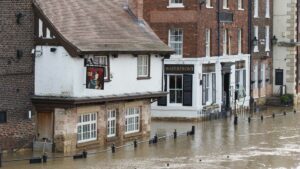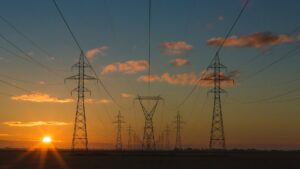This year has been surprisingly busy for Greengauge. We didn’t know what to expect come lock down in March and now in October it’s good to see that the construction industry in our field has remained engaged and that in times of crisis the issue of climate change has not been pushed to the end of the line but has remained in people’s minds as a matter of urgency. We have been able to meet (virtually) and talk with many new potential clients and design team members which has been increasingly encouraging. I have therefore been talking a lot about the services we offer, explain why we do things the way we do and what value we give to the design process. It’s great when these discussions lead to enthusiastic engagement.
We are currently coming towards the end of our own refurbishment project on our home and I have been reflecting on the journey we have been through, the various circles we have been round and paths we have lead ourselves down. In the end I think we have ended up with a good design but had I listened to myself as an independent member of a design team I am sure the process would have been smarter.
Our first challenge was deciding what to do, we sketched out many options, employed an architectural technician to draw them up and after two planning applications and about three and a half years on and off still didn’t have a design we felt made the most of the budget or the house’s layout. Finally, we admitted we needed an expert, enter an architect. Our Architect David managed in one swoop to understand our brief, add his own considerable experience and propose a more concise design which picked out all the good bits of what we had previously thought and tied them together.
We then went on to look at fabric and servicing (our specialty) and we proposed to ourselves every wild idea we had ever wanted to include in a project both in terms of retrofit and renewables. We went through ups and downs of deciding what we wanted from the house, round in circles and so many changes in strategy we forgot where we started and would have blown our budget several times over. Our various musings and thought processes weren’t a bad thing, but it meant that the decision making process wasn’t streamlined and for a very simple project it was extremely lengthy, so scale this up and we would still be working on the ideas! This is where the expertise and impartiality of a design team pay dividends. There are not only the considerable technical expertise a team brings to a project but also the experience and ability to make and advise on decisions purely on their factual merit and the scope and brief you have created together. Having a team working with you who you can question, pose ideas to and use to navigate through the infinite number of options and decisions which are required in the design of a building is invaluable. Also just having a team who can advise on what to worry about and what not to worry about is important, as opposed to making decisions on the whim you happen to feel at the end of a hard week whilst drinking a G&T (speaking from experience).
The classic example is the extent of works we thought we could do ourselves. It fluctuated from ambitiously trying to do the plumbing ourselves to only putting a lick of paint on the walls. Had I listened to my consultants head I knew all the pitfalls that trying to project manage and do works yourself can bring and we would have better tied up items contractually. Instead we have ended up juggling trades, timescales, who is set to do what. This has been a useful experience to work through as someone in the industry but definitely hasn’t been a simple ride.
The other key mistake was not having a full technical design fully costed out before starting. We had a good proportion but it’s actually all those nitty gritty bits that add the time and money and that is what a design team of consultants can provide before you break ground.
If I had listened to my self as a design consultant, we could have bottomed out the specific brief of the requirements of the project at early stages, taking into account our energy performance requirements and budget. I would have also been able to have discussed the most realistic methods to construct and complete the work, who should complete the work and how we could have simplified the construction process. Instead we convinced our selves of taking a looser stance, which will be fine in the end, although we will have a few more grey hairs. I know that we could have run the project with greater clarity for all parties if we had used the discipline of a design team and consultants behind us. The disjointed way we have ended up running our small building project would have had a much greater impact on a larger project and potentially more costly in the end and certainly a lot more stressful.
Our project did not require the scale of early option planning which many of our projects do. When you have a site with many potential options the feasibility stage of design is incredibly important to ensure you explore all the options and feel satisfied your decision making process explored these well. This not only applies architecturally but in terms of energy, carbon and environmental strategies which then in themselves have implications back on architecture and structure to provide a comprehensive solution. This is what we endeavour to achieve with our clients at early stages, a comprehensive exploration of their brief and then the energy and environmental opportunities available which can meet that brief whilst minimising the impact on the environment and climate change. Every project is different and has different focuses which we adapt our work to. Our advice may encompass wide strategic briefs which both look to develop a plan of action, through to understanding the detailed impact of a material selection decision on the risk to the building or to achieving a comfortable space.
We are committed to reducing the impact of buildings on the environment. We see it as our duty to help our clients better understand what the challenges are in producing low energy and low/zero carbon buildings, and to assist them on their journey. We are just not sure we’ll ever let ourselves be our own client again!
Written by Hannah Jones





